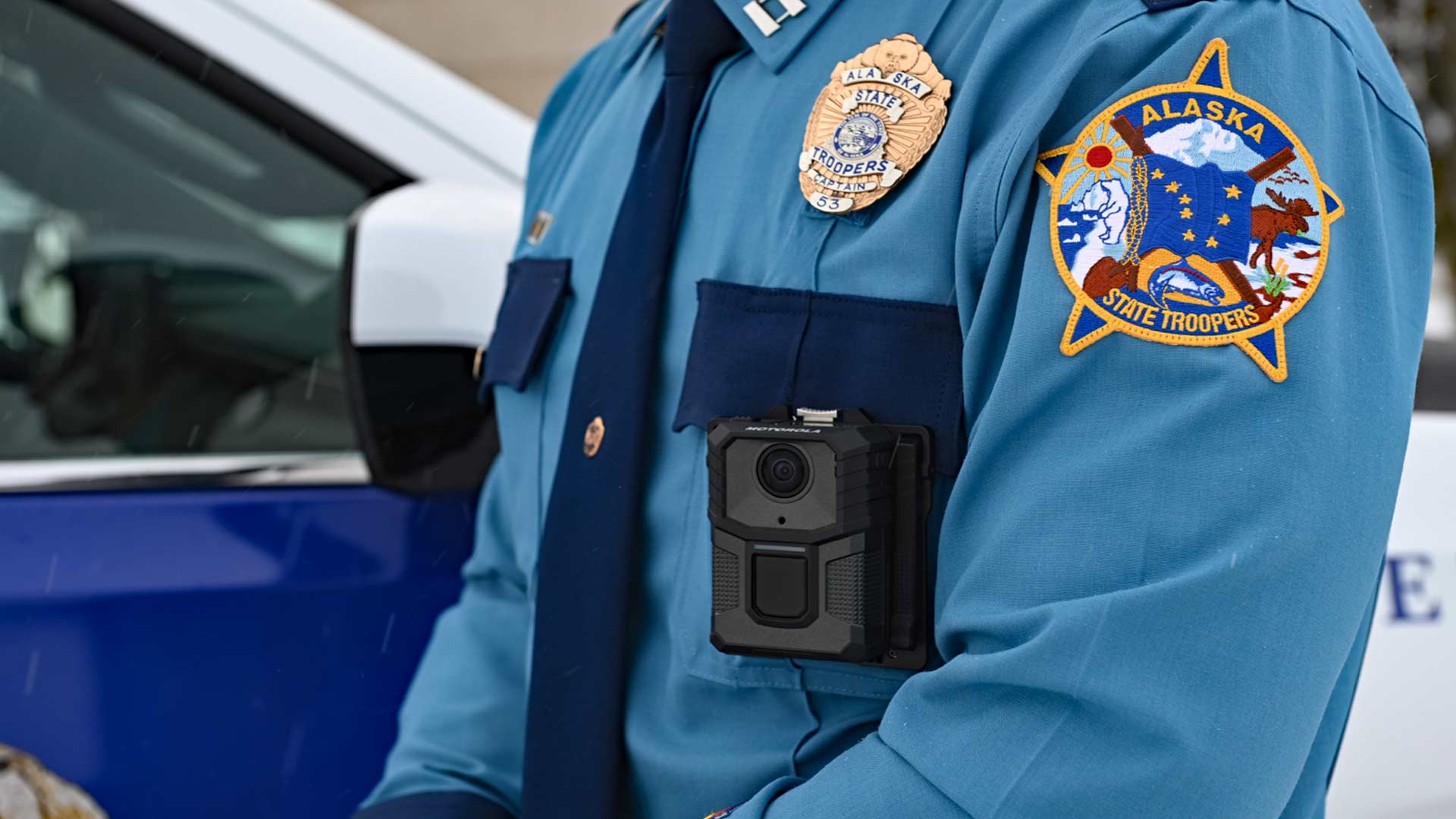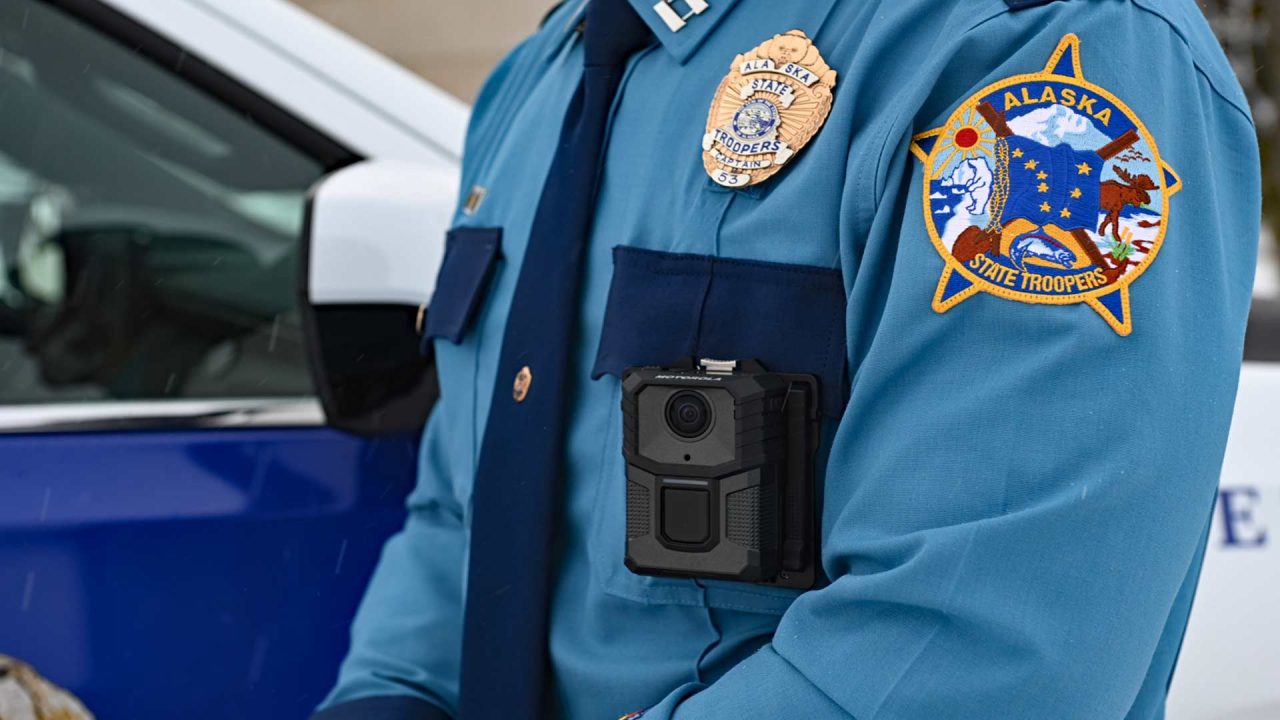
The Alaska Department of Public Safety has released a draft copy of its body worn camera policy for public feedback.
The new policy will govern the use of body cameras, personal audio recorders, and dash cameras.
Money for the proposed policy comes via $3.58 million in state and $938,000 in federal funding.
The DPS draft policy is based off of national best practices from the International Association of Chiefs of Police, US Department of Justice, and other similarly situated law enforcement agencies across the nation.
A copy of the draft policy, frequently asked questions, and photos can be found at: https://dps.alaska.gov/bodycam
Highlights include the following:
DPS may proactively release recordings after officer-involved-shootings and other critical incidents once the primary interviews are completed with suspects, witnesses, and victims.
DPS will retain evidence that is captured for between 26 months and or 99 years depending on the nature of the interaction that is recorded.
Members of the public will be able to request copies of recordings after an investigation is completed and any related court proceedings involving the state have been closed under the Alaska Public Records Act.
“The Alaska Department of Public Safety has been working for years to bring body worn cameras to our department and the citizens that we protect,” said Alaska’s Public Safety Commissioner James Cockrell. “Not only do body worn cameras increase transparency and trust, but they help better serve the Alaskans that we interact with every day, and provide undeniable video evidence for prosecutions and investigations.”
ALASKA WATCHMAN DIRECT TO YOUR INBOX
Cockrell added that he hopes “Alaskans will take a look at our draft policy and give us candid feedback and ways that can make body cameras better for all Alaskans.”
The state has chosen Motorola as the vendor for the body camera project, the same company that provides vehicle dash cameras and radios for the Department of Public Safety.
In total, DPS has purchased 600 Motorola V300 body cameras for the use of Alaska State Troopers, Alaska Wildlife Troopers, commissioned officers in the State Fire Marshal’s Office, Court Services Officers, and Village Public Safety Officers.
DPS will begin a pilot program in Spring 2023 which will deploy approximately 30 cameras to Troopers that service urban and rural Alaska and are currently equipped with a wireless dash camera in their patrol vehicle. DPS intends to begin issuing body cameras to all Troopers, CSOs, DFMs, and VPSOs later in 2023.
TAKING ACTION
The official public comment period will run from February 8, 2023 – March 1, 2023. Alaskans or organizations that would like to comment on the policy should do so in writing by emailing dps.bwc.comments@alaska.gov or mailing their comments to:
Alaska Department of Public Safety
ATTN: BWC Comments
5700 East Tudor Road
Anchorage, AK 99507









9 Comments
Great, this will help the police show exactly what happened and was said. Only problem I see is the release time. it should be way less than 26 months. possible one month max should be more inline. by 26 months everyone will have forgotten the facts. We want transparency. If an officer did wrong we want action now not two years down the road. Another point is cost. Why is the state paying so much. Feds should pay more. And 600 of them? We don’t have that many officers in Alaska. I know a few years ago what the troopers numbers were. Are you also giving them to APD, FPD, or JPD, that might bring that number into a more reasonable amount. Just my two cents.
26 months is not the release time. It is the retention time. The time before it is discarded. And it’s 26 months to 99 years. So is the issue is minor such as a traffic ticket that is uncontested, 26 months. Homicide would be more like 99 years.
Cockerel
I’ve heard your a nice person. But; your department has an outrageous stain on it with the Mary Fulp screw up! We the citizens know about what happened because of Mary Fulps cell camera!! Accountability is precisely what you and your department and Dunleavy for that matter, are desperately trying to avoid!
“Will do better next time “ !! Government and this governor are a joke! I have lost all respect and recognise that the implication of that is anarchy! How about actually taking it a tad bit more seriously and willingly accept accountability that cost you something, not the tax payers!
Dave, this is a topic that segues into something we have long needed and should consider; An elected law enforcement official. Having worn the uniform, I approach this from a certain amount of experience and insight. There are currently about 237 State Troopers serving the entire state of Alaska, and that includes Fish and Wildlife Troopers and this includes the compliment of brass who administer the Department at the Puzzle Palace in Anchorage. In most jurisdictions, the optimum ration of LEO’s are 3 field officers to 10,000 citizens. The Colonel is the highest ranking uniformed Trooper and liases between the department officers and the Governor appointed administrative Commissioner. When it comes to the municipalities, the Chief of Police is appointed by the mayor or other city official. That’s it! We have no elected state law enforcer, and that includes District Attorney’s. What that means to me is that there is no one with skin in the game when it comes to law enforcement and public safety. If the governor or mayor is not satisfied with the political appointee they’ve selected, they simply fire them, and it becomes just another shuffling of the deck to find another face card to fill a slot. As citizens of this great and enormous state, we deserve more than that. We have more miles and distance between communities than any other state in the union and that equates to the scale of the problem. Maybe if we had a person to focus on the scale, we might reduce the severity of the problems we face. A Sheriff, on the other hand, is an elected official who has to earn the trust and confidence of the electorate, as well as a team of officers and deputies who are extensions of the Sheriff, who act and speak for him, as he is the one with whom the buck stops. The Sheriff must invest his knowledge, experience and management skills to create a law enforcer to focus on the proportionate scale of the community, who demands accountability and interaction. A political appointee has generally worked in the field long enough to retire, but has bumped up against a competitive ceiling and must apply elsewhere to promote. If he fails, he moves on, and in most cases has enough credit years to leave with a pension, thus no personal loss. An elected Sheriff must earn the position from the electorate and continue to earn it in order to be re-elected by producing results, carve out a place of distinction as a crime fighter and be results oriented, in order to continue to earn a salary and pension; thus has skin in the game. Of course, this is how legacies are built. If you’ve ever lived in other states and lived long enough in communities who were enforced by a Sheriff, you knew who they were, and you came to know them by their results, their interactions with the community, and their devotion to do their jobs as reflected in their deputies. Alaska has none of this. The boroughs blow enough money on useless ventures, but maybe this is something to be considered to address the revolving door of the criminal justice system IMHO.
Simply wear the damn things for your protection and the public!
Make no mistake, many LEO’s do not want to wear on-body cameras. Years ago, AST discarded and discouraged their staff from wearing the devices due to “FOIA requests and the related enormous amount of staff time dedicated to redaction of non-essential information”. BS. A ten year old can run the redaction features on these cameras and they are automated and intuitive. EVERYONE should welcome and embrace the use of these devices. Everyone. And yes, Commissioner Cockrell is a stand up man. Clean this mess up and restore trust in Alaska law enforcement.
It would have been great to have body cams to record the incident between rookie trooper Brian Glenn and 71 year old Robert “Bob” Bodell. Depending on whose version is accepted, either Bodell was driving drunk and assaulted the trooper, or Bodell wasn’t driving and the trooper used excessive force and assaulted Bodell for becoming angry at the trooper’s accusations. If Glenn had been recorded using excessive force against Bodell, the troopers could have made a clean break from Glenn and condemned his actions. As it is, whether or not Bodell assaulted the trooper, large segments of the public find the rookie’s version of events unbelievable and the AST’s continued support of the trooper’s version of events, without any video to back it up, has tarnished their reputation.
What is the criteria to determine when the camera goes on? I understand it is up to the trooper.
This is promising news!
“BOMBSHELL: HOLDING THEM TO ACCOUNT FOR CRIMES AGAINST HUMANITY — PASCAL NAJADI & TODD CALLENDER”
https://www.sgtreport.com/2023/02/bombshell-holding-them-to-account-for-crimes-against-humanity-pascal-najadi-todd-callender/